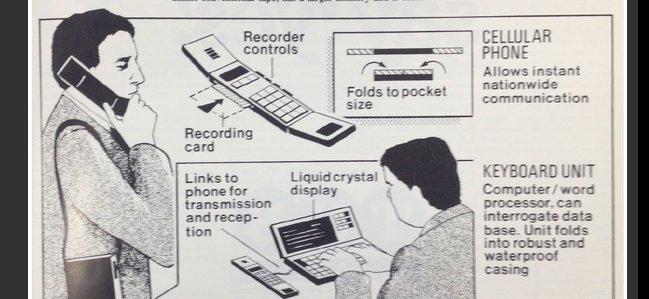Plagiarism, Copyright and Social Media
 Update: I made an error in my original reporting. The Press Gazette was attributed in the original Mirror Tweet, I simply missed it. I apologize for that error. However, the Bilton tweet did not provide any @ attribution, so some interesting questions are still raised and are worth discussing…
Update: I made an error in my original reporting. The Press Gazette was attributed in the original Mirror Tweet, I simply missed it. I apologize for that error. However, the Bilton tweet did not provide any @ attribution, so some interesting questions are still raised and are worth discussing…
I was recently tipped off by Twitter user Beilinglaoshi about a Twitter plagiarism controversy that is taking place between The Daily Mirror and its The Mirror Style account and The New York Times, specifically reporter Nick Bilton’s account.
The controversy centers around two tweets. The first was on May 25th by The Mirror, which featured a 1985 article/graphic from The Press Gazette about how it predicted reporters would work in the then-future. It included an image of the article with a water for @TheMirrorStyle.
A day later, Bilton posted a similar tweet with the same image (including watermark) but did not indicate it was a retweet or a modified tweet.
The move prompted The Mirror to respond, asking if Bilton was “the heir to Jayson Blair?” the famous New York Times reporter who was fired for plagiarism, falsification and other ethical lapses.
While it’s a hyperbolic statement and the controversy doesn’t seem to have gained a lot of traction, The Mirror’s allegations have only received 6 retweets as of this writing, the story is an interesting one as it pertains to how attribution, copyright and plagiarism are viewed in social media.
That’s true for one simple reason: While there’s a debate whether Bilton should have listed his tweet as a retweet or a modified tweet, there’s no discussion about the use of content from the Press Gazette or if they were adequately attributed for their part, namely the original content.
Lament for the Original Creator
The Press Gazette is a journalism trade publication from the United Kingdom. It is the original creator of the 1985 image that both tweets share. The image is still protected by copyright and will be for several more decades.
I’m not even going to attempt a fair use analysis on the use of the image in a tweet, especially considering that The Mirror and The Press Gazette are both UK publications and fair use (or rather, fair dealing) rules in the country are radically different than in the U.S. However, the fact that copyright wasn’t even raised in sharing is interesting in and of itself.
But even more interesting is the attribution The Press Gazette got. While both Bilton and The Mirror mentioned it by name, neither gave a hat tip to the publication’s Twitter account or linked to the publication’s site.
While the Press Gazette isn’t too hurt about the slight, they covered the original post on their site, it’s still interesting that the creator of the original content receives neither a nod to their Twitter handle nor a link, but the original person to Tweet is upset about not getting his name mentioned when the content of the tweet is shared by others.
After all, the Press Gazette is the ones who created the content involved, published it and is being lauded for being fairly spot-on about their predictions from nearly 30 years ago. Doesn’t it make sense that they should receive the same courtesy as the person who found and posted the content?
A Culture of Sharing, Not Creation
To be completely clear, The Mirror did provide a valuable service here. They went through the archives of an industry publication and found an obscure but relevant and interesting item that they felt was worthy of sharing.
The Mirror deserves credit for their work and, if Bilton did get the idea for the tweet from the Mirror, which seems almost certain, then he should have given a hat tip or some attribution. The fact The Mirror didn’t receive any, even just a text mention, is worrisome.
However, the content creators deserve the same level of attribution, though they rarely seem to get it in social media, where most of the emphasis and reward is for those who locate and share content, not necessarily those who create it.
But while editors and gatekeepers have important jobs online, their relationship with creators needs to be symbiotic, making sure that those who create good content are just as rewarded as those who find and share it.
After all, it takes both talented creators and talented content creators to deliver a steady stream of great material to an audience. If one is favored at the expense of the other, there will be less for everyone to enjoy.
Bottom Line
The attribution requirements of social media seem to be confusing but they really shouldn’t be. When your post or submission builds on the works of others, whether its others who created the work or helped find it, they should be credited as appropriate for the platform.
But the fact that it is so complicated is bizarre to me. Twitter, Facebook, Google+, LinkedIn and other social networks all make it incredibly easy to tag and mention others in your post. This is not a case of following complex attribution rules in scientific research, but rather, using a simple system in the way it is designed to be used.
So, when using social media, take a moment to think not just about those who helped you find the content you’re sharing, but those who created the work you’re helping to spread. Make sure that they get their time in the sun too and that they get the credit they deserve.
Not only will they appreciate it, but it will help ensure that they and other creators are continuing to make works and that there will be a lot more content to share and spread moving forward.
Want to Reuse or Republish this Content?
If you want to feature this article in your site, classroom or elsewhere, just let us know! We usually grant permission within 24 hours.
